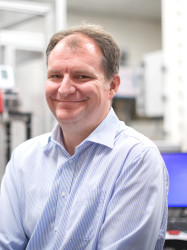BibTex format
@article{Avalos:2021:10.1016/j.ijheatmasstransfer.2021.121452,
author = {Avalos, Patino J and Dargaville, S and Neethling, S and Piggott, M},
doi = {10.1016/j.ijheatmasstransfer.2021.121452},
journal = {International Journal of Heat and Mass Transfer},
pages = {1--16},
title = {Impact of inhomogeneous unsteady participating media in a coupled convection-radiation system using finite element based methods},
url = {http://dx.doi.org/10.1016/j.ijheatmasstransfer.2021.121452},
volume = {176},
year = {2021}
}

